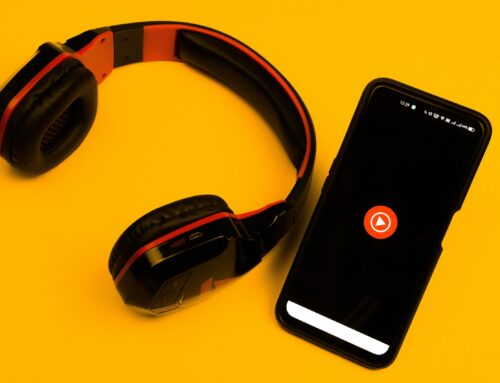If you are not familiar with some of the common publishing terms, check out this glossary of publishing-related words and phrases.
Acid-free paper: Alkaline paper, free from chemicals that destroy paper. It lasts longer, but costs more and is generally used for library books.
Advance copies: First books sent to those who ordered, requested or were promised a book, generally before the book goes into distribution.
Alignment: The position of text lines on a page. Left alignment means that the left margin of each line down the page is even, and that the right margin is ragged or uneven; right alignment means that the right margin is even down the page, and the left margin is ragged or uneven. Alignment can also refer to margins being justified, which refers to both left and right margins being even down the page, causing extra spacing between words when necessary. Center alignment means that the lines of text are centered down the middle of the page.
Artwork or illustration: Visual material, such as drawings, pictures, and photographs, used to explain, clarify or decorate text
Back matter: Printed material found in the back of the book after the main section of the book. This includes the appendix, the bibliography, the index and other related matter.
Bar code: The bar code is the ISBN number transferred into a worldwide compatible optical character recognition (OCR) form, the scannable image that identifies the title, author and publisher of the book. See “EAN Bookland bar code”
Binding: The back and front covers and the spine that hold the pages of the book together.
Bluelines: The printer’s photocopy or blue print mock-up of the book’s pages. These are used to detect errors and make corrections.
Body copy: The main section of the book.
Body text: The typed portion of a page, excluding the headline.
Boldface: Words or phrases in heavier and darker print used for emphasis.
Book manufacturing: The complete production of assembling a book, printing, binding and packing.
Book signing: An event where the author reads, talks or discusses his/her book, providing an opportunity for potential buyers to meet the author and to have a copy of the book personally signed, usually held at bookstores or book fairs.
Bulk: Pages of the book per inch without the cover.
Camera-ready copy: The manuscript typeset and prepared for reproduction as is.
Cataloging in Publication data (CIP): Card catalog information printed on the copyright page; a service provided by the Library of Congress for books extensively used in libraries.
Clip art: Uncopyrighted drawings and pictures intended to be cut and pasted in printed material.
Coated paper: Chemically treated paper providing a glossy or matte finish used to enhance brightness.
Copyright: A legal notice that protects “original works of authorship” both published and unpublished, that are expressed in a tangible form, but not the ideas themselves.
Crop marks: Lines or markings on a camera-ready manuscript indicating where the pages will be trimmed after printing.
Direct mail: Form of advertising books by sending information (usually as a brochure or flyer) directly to possible buyers and clients.
Distributor: A company that, for a fee, represents publishers by handling the warehousing and shipping of books to bookstores and libraries. They sometimes request an exclusive relationship with publishers and serve as the source for wholesalers.
DRM: It stands for Digital Rights Management, which uses usually uses some form of encryption to protect intellectual property from copyright infringement.
EAN Bookland bar code: The electronic scanning lines printed on the back cover or book jacket encoded with the ISBN and retail price.
eBook: Sometimes presented as Ebook or EBook, the term refers to a book that is available in electronic format. Usually eBooks are available in Adobe PDF or eBook Reader format, or in Microsoft’s LIT format, but there are many other formats available. A good eBook uses the technology effectively, with tables of contents that link to the correct chapters and search capabilities. Links to Web sites and other files also can be included.
Font: A particular typeface in a specific point size.
Foreword: Introductory remarks to the book written by someone other than the author.
Front matter: Printed material found in the front of the book before the actual body copy starts. It includes title and copyright pages, dedication, foreword, preface, table of contents, etc.
Frontispiece: An illustration placed before the first pages of a book. Usually faces the title page.
Fulfillment house: A company that handles the entire ordering process for books, such as storing, packing, mailing, maintaining records, and other business related operations for the author or publisher.
Galley proof: The typeset composition of uncorrected pages before formatted into a book, allowing the reader to detect errors. A galley copy can be inexpensively bound and sent to reviewers before publication.
Gutter: The white space formed by the inner margins of two facing pages.
Header: A caption or headline used to introduce chapters, sections or a new topic, usually in larger and bolder typeface than the body text.
Independent publisher: Someone who establishes a small press publishing house with the intention of self-publishing his/her own works; also can accept other authors’ manuscripts for publication.
ISBN: Literally, it stands for “International Standard Book Number.” A worldwide identification system that is a required element in the book distribution industry.
Justify: Positioned lines of text so that the left and right margins are evenly set down the side of a page.
Layout: The overall design or mock-up of a page, including typeface, headlines, page number, and visuals showing how the page will look when printed; a guide for the printer.
LCCN: Established in 1901, a numbering system that lists forthcoming publications; this collection of selected titles is used by most public and private libraries, researchers and bibliographers. It stands for Library of Congress Control Number.
Manuscript: An author’s written material prepared for publication.
Marketing: The business of advertising, promoting and selling books to the public and to distributors.
Media kit: Well-planned promotional materials, such as press releases, flyers, letters, and reviews used for announcing and circulating information about a forthcoming book.
Niche market: Tailoring subject material to a specific area of demand or particular interest, such as topical and regional books.
Offset: The light image of transferred ink or an imprint that comes from an adjoining text page or illustration, or an inserted paper.
Overrun: To print a larger quantity of books than ordered. Printers estimate a 10 percent spoilage. If this does not occur, the additional books are charged to the customer but only up to 10 percent.
Perfect bound: A binding method that uses plastic glue to bind the loose leaves to book cover.
Prepress: The book designer’s or printer’s preparation of the manuscript for production.
Press release: An announcement issued to the news media and other targeted publications.
Printer’s errors: Mistakes made during the printing process, such as ink blots or smudges on pages. Also corrections or changes made because of some error on the part of the printer. The publisher should be compensated for printer’s errors.
Print on demand: The technical capability to print and bind books in small quantities—even one at a time—as markets demand.
Publicist: Someone who customizes promotional materials for a given book; may also assist in arranging public appearances and interviews.
Remainder: Books that are discounted from the publisher because of overprinting, sluggish sales, or outdated material.
Retail: The sale of books at full price directly to the public.
Sans serif: Typeface that is straight with no serifs or small extensions on letters, generally used for headers.
Self-publish: One’s written works made public by oneself.
Serif: The fine line that extends from the top and bottom of letters making them easier to read, used for the body text of a book.
Signature: Large sheets of paper printed in multiples of four that when folded and trimmed become the pages in the book.
SAN: It stands for “Standard Account Number.” A number assigned to libraries, schools and organizations that buy, sell or lend books.
Stripping: Positioning all the pieces of the layout on large sheets of paper to construct the templates.
Target audience: An identified group of readers who would most likely be interested in a book’s particular subject matter.
Title page: Odd-numbered page at the beginning of the book that gives the title, subtitle, author’s name, publisher and place of publication.
Typeface: The style of typed letters used for the body text.
Underrun: To receive fewer books than ordered. This may occur because of spoilage during printing or printer’s error.
Wholesaler: A company that handles the resale of books in large quantities and serves booksellers (distributors work on behalf of publishers).
Much of the content of this glossary was adapted from Go Ahead Self-Publish!, compiled and edited by Eileen Birin.

